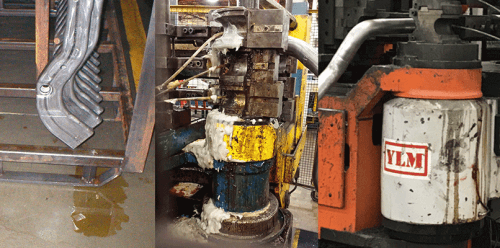 So you’ve determined the type of material and tooling requirements you have for your tube-bending processes—now you need to consider how the lubricant will be applied in the your bending applications.
So you’ve determined the type of material and tooling requirements you have for your tube-bending processes—now you need to consider how the lubricant will be applied in the your bending applications.
Very fluid tube-bending lubricants can be dipped, poured or sprayed onto inner and outer tube surfaces to coat tube and tooling properly. More viscous liquids, pastes and gelled lubricants can be applied manually, but it is preferred they be applied via pump through the mandrel to ensure the proper amount of lubricant is delivered at the right stages in the bending process. As would be expected—the more viscous the bending lubricant—the more likely it will cling to the tube and tooling surface—ultimately requiring lower volumes of lubricant for bending. The more fluid/liquid products tend to weep from tubes or sometimes fling out of the tube during bending applications. If low viscosity products are used, MQL application methods should be investigated to prevent waste.
When choosing a bending lubricant—consider the construct of the tooling and the delivery system. Check with your vendors to ensure proper seal and O-ring materials are used and proper pumps and pump pressures are used to minimize waste and damage to equipment. Most equipment and machinery has maximum tolerances for speeds and pressures and this should be taken into account when applying bending lubricant. You don’t want to apply too little lubricant and constantly break tooling, but you also don’t want your applicator oozing lubricant out onto fixtures and your shop floor.
A little bit of planning and experimentation can go a long way. A couple more dollars spent on the right O-ring or valve can save you a lot gallons of lubricant on your shop floor.


